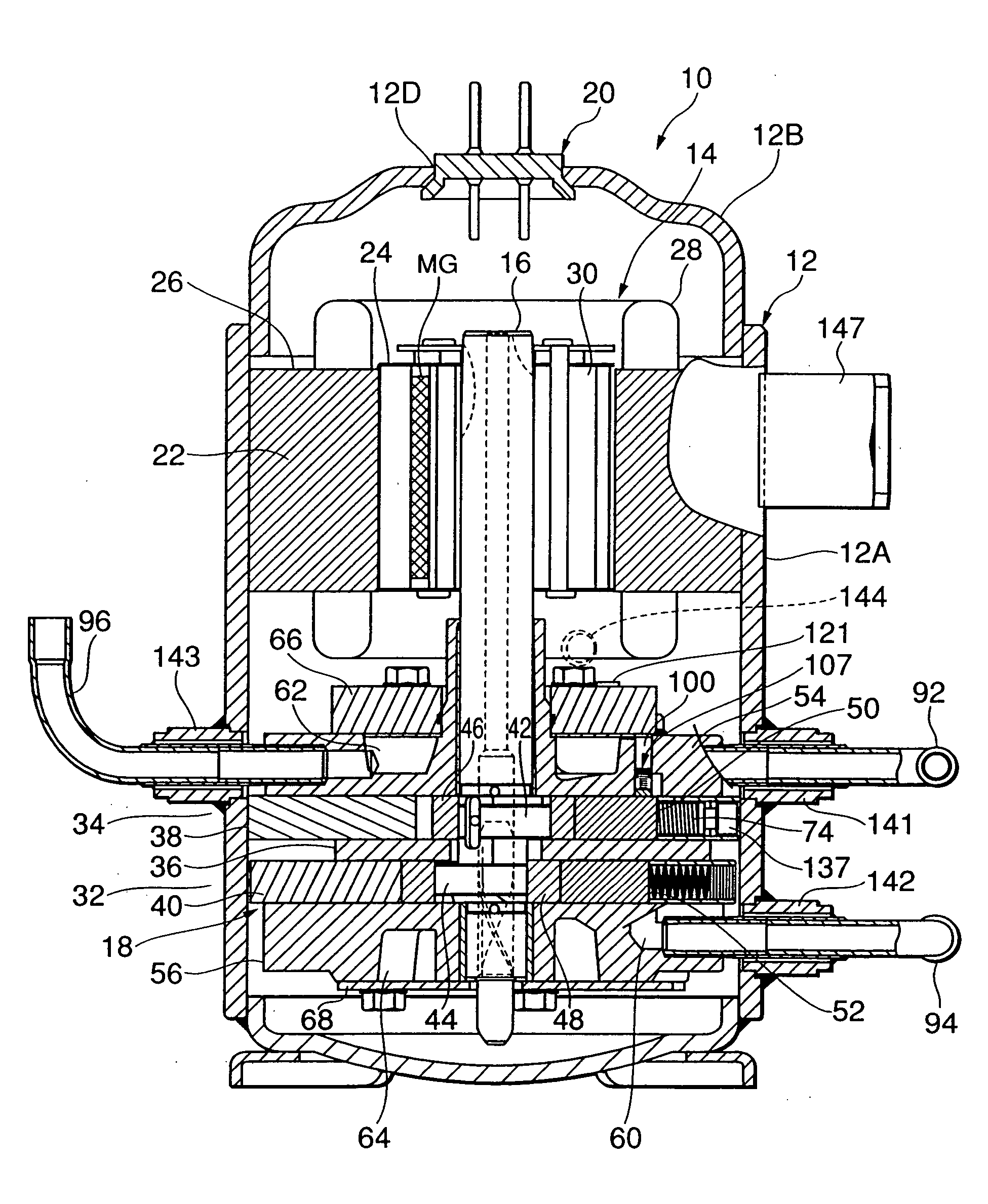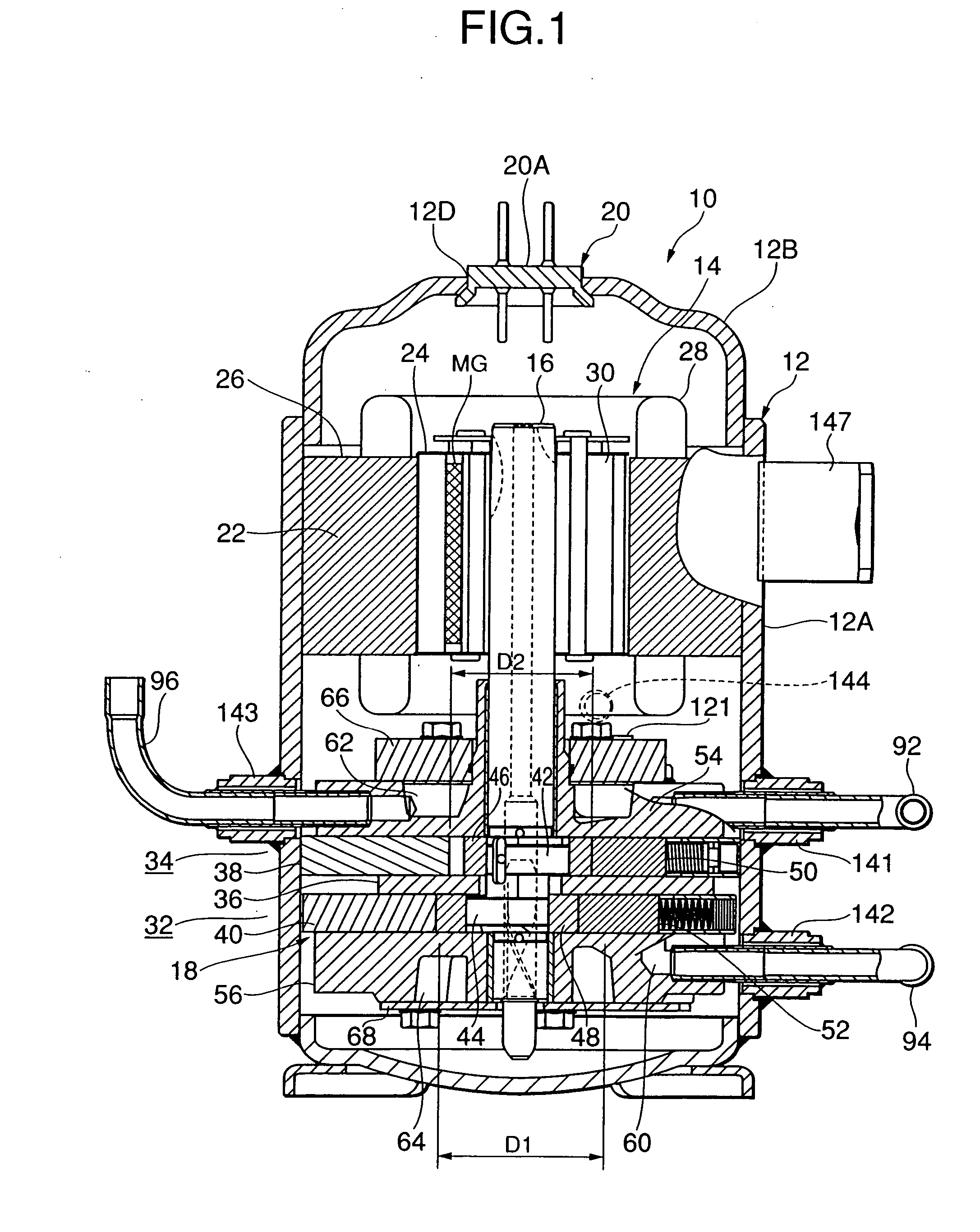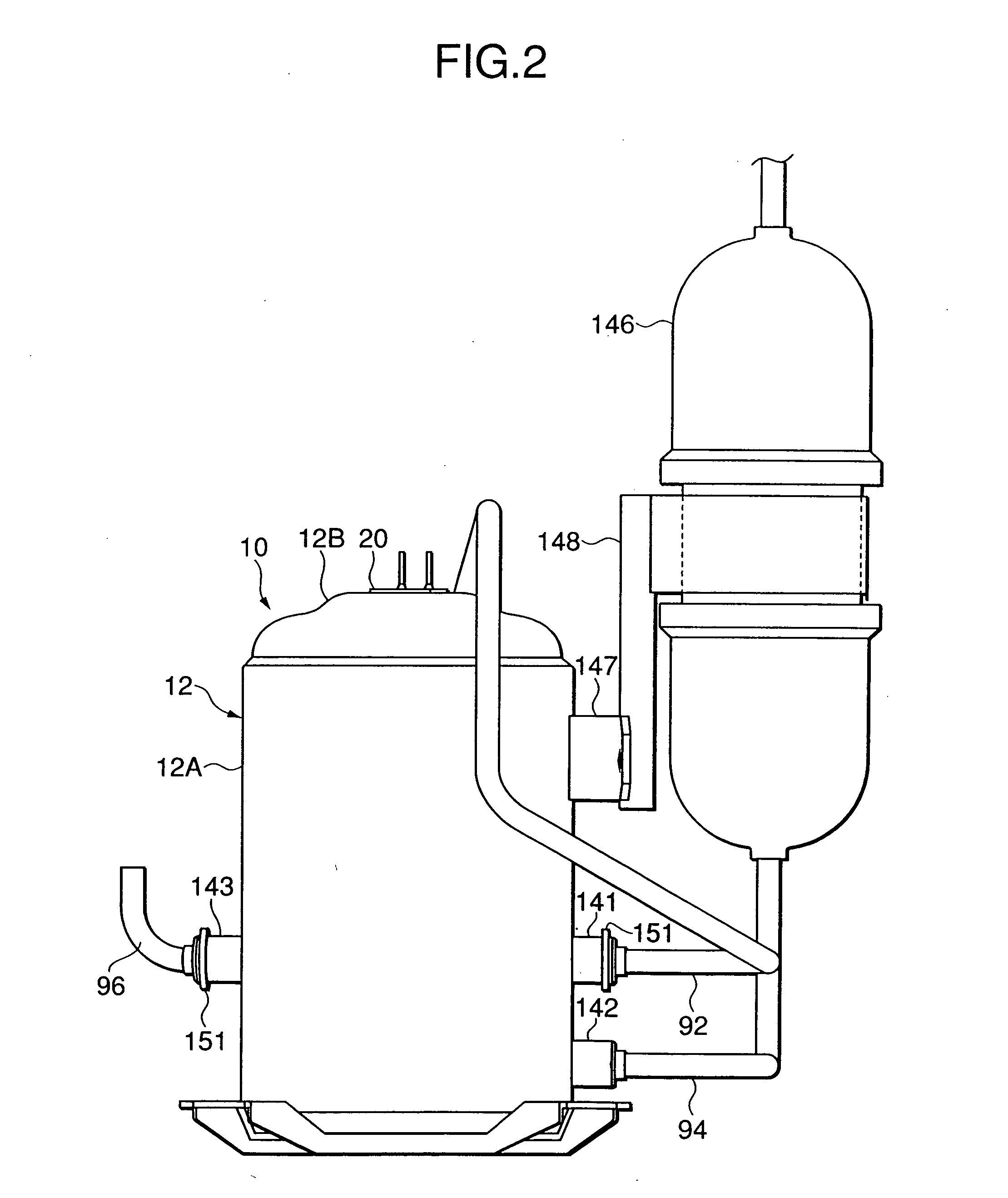Especially when an
outside air temperature is low, the
discharge pressure MP of the first rotary compression element becomes lower and, therefore, the second-stage
differential pressure (difference between the suction pressure MP of the second rotary compression element and the
discharge pressure HP of the second rotary compression element) increases further, so that a
compression load of the second rotary compression element increases to bring about a problem that durability and reliability deteriorate.
Furthermore, as the thickness (or height) of the cylinder increases, the thickness (or height) of a rotary compression-mechanism also increases, so that overall size of the relevant multi-stage compression type rotary compressor becomes larger, thus bringing about a problem of a difficulty in
miniaturization of the compressor.
Accordingly, when a pressure on the refrigerant discharge side of the second rotary compression element is applied to the
back pressure chamber, a pressure to press the vane against the roller becomes higher than necessary to thereby apply a large load on a portion where a tip of the vane slides along an outer periphery of the roller, thus bringing about a problem that the vane and the roller may be worn heavily or, in the worst case, be damaged.
When the first-stage
differential pressure increases in such a manner, a
pressure difference between an inside and an outside of the discharge valve which opens and closes the discharge port of the first rotary compression element becomes excess, thus bringing about a problem of deterioration in durability and reliability such as damages of the discharge valve.
When the second-stage
differential pressure increases in such a manner, a
pressure difference between an inside and an outside of the discharge valve of the second rotary compression element becomes excess, thus bringing about a problem that the discharge valve etc. of the second rotary compression element may be damaged by this
pressure difference.
This vane, however, needs to be pressed toward the roller side always, so that conventionally, in configuration, the vane has been urged on the roller side not only by a spring but also by a
back pressure applied to a
back pressure chamber formed in the cylinder beforehand, thus complicating a construction.
Especially at the second rotary compression element of such an internal medium-pressure, multi-stage compression type rotary compressor, a pressure in the cylinder is higher than the
medium pressure in the sealed vessel, thus bringing about a problem that a communication path needs to be formed through which a high back pressure is applied to the back pressure chamber.
Furthermore, in a refrigerant circuit using such a multi-stage compression type rotary compressor, an
evaporator is liable to be frosted and so needs to be defrosted; however, if, to defrost this
evaporator, a high-temperature refrigerant discharged from the second rotary compression element is supplied to the
evaporator without being decompressed at a decompression device (in both cases of being directly supplied to the evaporator and being supplied thereto only by being passed through the decompression device but not being decompressed therethrough), the suction pressure of the first rotary compression element rises to thereby increase the
discharge pressure (medium pressure) of the first rotary compression element.
Thus, when this refrigerant is discharged through the second rotary compression element, it is not decompressed, so that the
discharge pressure of the second rotary compression element becomes almost the same as the suction pressure of the first rotary compression element, thus bringing about a problem that a
pressure level relationship may be reversed when the refrigerant is discharged from or sucked into the second rotary compression element.
In this case, however, a discharge side of the first rotary compression element and that of the second rotary compression element communicate to each other in construction, so that a same pressure appears on the suction side and the discharge side of the second rotary compression element, thus bringing about a problem of unstable operation of the second rotary compression element such as breakaway of the vane from the second rotary compression element.
 Login to View More
Login to View More  Login to View More
Login to View More 


